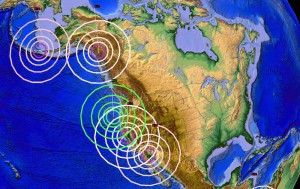U.S. Supreme Court Changes Jurisdictional Landscape in Holding that Consent-by-Registration Laws Suffice to Allow General Personal Jurisdiction over Corporate Defendants
By Saxon Guerriere, Dallas, Eric Rosenberg, Philadelphia and Maureen Carr, Philadelphia on June 30, 2023
U.S. Supreme Court Rejects Challenge to Pennsylvania’s Corporate Consent-by-Registration Statute, Allowing Suits Against Foreign Companies Whether Arising from Acts in Pennsylvania or Elsewhere
The U.S. Supreme Court on June 27 in Mallory v. Norfolk Southern Railway Co., Case No. 21-1168 (2023) affirmed a statute that grants state courts general personal jurisdiction over out-of-state companies registered to do business in the state, even when an alleged injury occurred elsewhere, by virtue of registration alone. The Court rejected an out-of-state railway company’s Fourteenth Amendment Due Process challenge to Pennsylvania’s consent-by-registration statute. For a company registered as a foreign corporation in Pennsylvania, this is now the equivalent of being headquartered there, and that company may be hauled into court in Pennsylvania for any suit, whether the suit arises from acts in Pennsylvania or anywhere else in the country.
Expected Impact on Corporate Clients
We expect there to be an immediate impact on corporate clients with presences in consent-by-registration states, with filings based solely on the fact that the corporation is registered to do business in the state. Presently, Pennsylvania and Georgia have consent-by-registration laws for out-of-state corporations that have been upheld. We will be watching to see whether other state legislatures amend their corporate registration statutes to impose consent to jurisdiction by way of registration.
1917 Precedent Upheld as Basis for Opinion
The Court in Mallory held that its century-old decision in Pennsylvania Fire Insurance v. Gold Issue Mining, 243 U.S. 93 (1917) – which allowed a Pennsylvania insurer to be sued in Missouri by an out-of-state plaintiff on an out-of-state contract – remains controlling precedent. The Court reasoned that Pennsylvania’s law, like the Missouri law upheld in Pennsylvania Fire, explicitly provides that registration to conduct business as an out-of-state corporation allows state courts to exercise general personal jurisdiction over an out-of-state corporation as if it were a domestic corporation.
Factual Background and Statutory Scheme
Virginia resident Robert Mallory sued his former employer, Norfolk Southern, after being diagnosed with cancer that he attributed to his work as a freight-car mechanic in Ohio and Virginia. Norfolk Southern, incorporated and headquartered in Virginia, claimed that a Pennsylvania court’s exercise of personal jurisdiction over it would violate the Due Process Clause of the Fourteenth Amendment. Mr. Mallory pointed to Norfolk Southern’s corporate registration and presence in Pennsylvania, including that the company manages over 2,000 miles of track, operates 11 rail yards, and runs 3 locomotive repair shops in the Commonwealth.
Pennsylvania law provides that a foreign corporation may not conduct business in the Commonwealth until it registers with the Pennsylvania Department of Business. 15 Pa. Cons. Stat. §411(a). Pennsylvania’s long-arm statute allows Pennsylvania courts to exercise general personal jurisdiction over foreign corporations that are registered in Pennsylvania on “any cause” in the Commonwealth’s courts. 42 Pa. Cons. Stat. §5301(b).
Jurisdiction Held to be Appropriate Based on Corporate Registration
The Pennsylvania Supreme Court held that this statutory scheme violates the Due Process Clause because it grants general personal jurisdiction over foreign corporations without an affiliation that is so continuous and systematic as to render the foreign corporation essentially at home in Pennsylvania, and because compliance with Pennsylvania’s mandatory registration requirement does not constitute voluntary consent.
In vacating the Pennsylvania Supreme Court’s judgment and remanding the case, the Court held that Pennsylvania Fire remains the law and that jurisdiction was appropriate over Norfolk Southern. The Court leaned heavily on its 1917 precedent for the proposition that statutes requiring corporate “consent” to jurisdiction do not violate the Due Process Clause of the Fourteenth Amendment. The Court reasoned that a Certificate of Authority to do business within the Commonwealth confers benefits and burdens shared by domestic corporations, including amenability to suit in state court on any claim regardless of how much business a company actually conducts in Pennsylvania.
Intervening Jurisdictional Decisions
The Supreme Court found that the Pennsylvania Supreme Court improperly concluded that intervening decisions implicitly had overruled Pennsylvania Fire. Specifically, Norfolk Southern had argued that International Shoe, 326 U.S. 310 (1945), and others undermined Pennsylvania Fire. The Court disagreed, stating:
All International Shoe did was stake out an additional road to jurisdiction over out-of-state corporations . . . . Pennsylvania Fire held that an out-of-state corporation that has consented to in-state suits in order to do business in the forum is susceptible to suit there. International Shoe held that an out-of-state corporation that has not consented to in-state suits may also be susceptible to claims in the forum state based on “the quality and nature if its activity” in the forum.
The Court also rejected Norfolk Southern’s argument that requiring companies to face suits in Pennsylvania would violate the “fair play and substantial justice” principle in International Shoe, pointing to Norfolk Southern’s tracks crisscrossing Pennsylvania, the freight tonnage it moved, and its many facilities in the Commonwealth. The plurality specifically held that Pennsylvania Fire (holding that an out-of-state corporation that has consented to in-state suits to do business in a forum is susceptible to suit there) and International Shoe (holding that an out-of-state corporation that has not consented to in-state suits may be susceptible to claims in the forum State based on the quality and nature of its activity in the forum) “sit comfortably side by side.”
Auto-Jurisdiction Based on Corporate Registration
Until Mallory, general personal jurisdiction over a corporation could be found in two very distinct places: (1) the state of a company’s headquarters, and (2) the state of a company’s incorporation. Mallory now also will allow a corporation to be hauled into court in any state in which it has consented to jurisdiction. It is very clear now that state statutes explicitly requiring a company to submit to state court jurisdiction are viable and constitutional, thus creating auto-jurisdiction for any and all lawsuits where such statutes exist, regardless of where the actual basis for a suit arises or the residency of the plaintiff.
Immediate and Potential Practical Impacts of Decision
What do we make of states that simply require a company to have a registered agent of service? Is that enough to create automatic general personal jurisdiction? The Court did not answer that question directly, but based on its heavy reliance on Pennsylvania Fire, it appears the Court may venture there in the future. The practical and immediate impact of this opinion is all but certain – plaintiffs will view it as a license to forum-shop in favorable jurisdictions with little actual connection to a venue, likely resulting in a near-term increase in forum shopping and challenges to general personal jurisdiction.
Of additional concern is the Court’s repeated citation to facts regarding Norfolk Southern’s continuous and expansive business presence in Pennsylvania as justification for the fairness of making it open to suit in the Commonwealth. Is this a glimpse at the majority’s future plans to extend general personal jurisdiction over all corporations in any state in which those companies choose to do business? The Court made the point several times that Norfolk Southern has taken full advantage of the business opportunities that Pennsylvania has to offer as if it were a domestic corporation and thus must also suffer the burdens of a domestic corporation. In the modern world of extensive e-commerce, one must wonder whether a future court may hold simply that by selling products online a company has consented to jurisdiction in any place where someone may access the internet.
The future of corporate personal jurisdiction is now unclear. This will undoubtedly lead to rampant forum shopping by plaintiffs, with plaintiffs bringing suits in states with jurisdictional consent statutes where the state’s laws are favorable to plaintiffs. Product liability and toxic tort defendants will be at significant risk of being sued in courts with plaintiff-friendly rules on issues like apportionment of liability, expert witness qualifications, and causation burdens of proof, regardless of that forum’s actual relationship to the underlying facts of a case. This decision will increase the unpredictability of doing business across state borders. Companies may start to think long and hard about registering an agent for service in a state with a jurisdictional consent statute or even do business there at all, with impacts on the economic health of the state.
Moreover, Mallory may leave the door open for state courts to determine that registration is a significant – perhaps even dispositive – part of any “purposeful availment” determination for specific personal jurisdiction, even if not general jurisdiction as in this case.
Prior Related Posts
For our prior posts on this case, please see Personal Jurisdiction: Open Season on Forum Shopping? and Supreme Court of Pennsylvania to Address Whether Registration of Out-of-State Businesses Creates General Jurisdiction | Environmental and Toxic Tort Defense Insight (ettdefenseinsight.com).





 As they are wont to do, the voters in the State of California in 2008 passed an initiative amending the state constitution. The admirable purpose was to ensure that victims of crimes, who suffered pecuniary loss as a result of a crime would have a right to monetary “restitution” from the criminal this will be implemented in all the
As they are wont to do, the voters in the State of California in 2008 passed an initiative amending the state constitution. The admirable purpose was to ensure that victims of crimes, who suffered pecuniary loss as a result of a crime would have a right to monetary “restitution” from the criminal this will be implemented in all the  wrongful death case. Sam Davis worked as an auto mechanic and home remodeler from approximately 1963 to 1979. He performed “one or two” brake jobs per day, and always used Bendix brake linings (for which defendant Honeywell was responsible). These linings contained 50 percent chrysotile asbestos by weight. He was also allegedly exposed to asbestos as a result of his home remodel work.
wrongful death case. Sam Davis worked as an auto mechanic and home remodeler from approximately 1963 to 1979. He performed “one or two” brake jobs per day, and always used Bendix brake linings (for which defendant Honeywell was responsible). These linings contained 50 percent chrysotile asbestos by weight. He was also allegedly exposed to asbestos as a result of his home remodel work.
